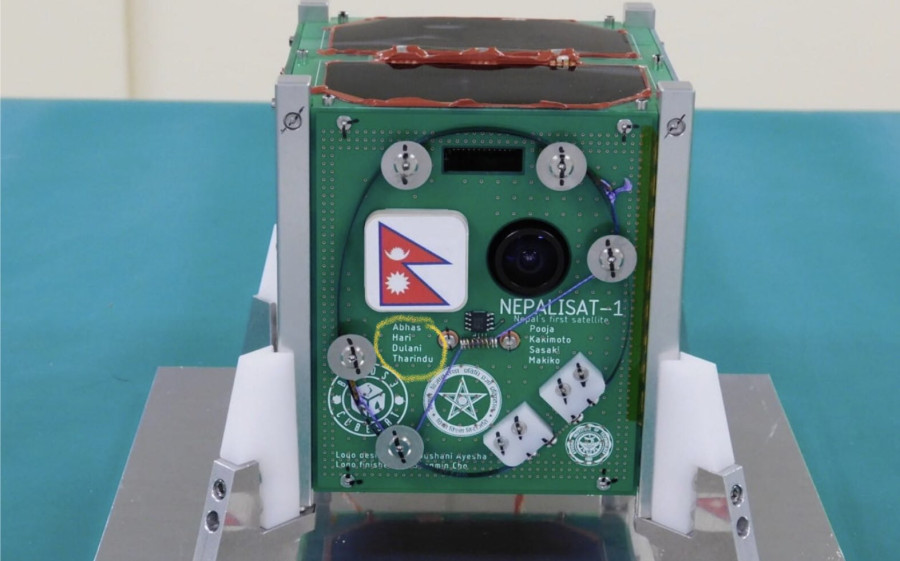Science & Technology
Nepal’s first ever satellite launched into space
Nepal’s first satellite, ‘NepaliSat-1’, has been launched into space, which will soon start rotating around the earth’s orbit to collect information about the country’s topography and earth’s magnetic field. Meanwhile, officials said, the satellite itself will also be studied for developing more advanced satellites in the future.
Nayak Paudel
Nepal’s first satellite, ‘NepaliSat-1’, has been launched into space, which will soon start rotating around the earth’s orbit to collect information about the country’s topography and earth’s magnetic field. Meanwhile, officials said, the satellite itself will also be studied for developing more advanced satellites in the future.
NepaliSat-1 was launched under the ‘Birds-3 satellite launch to International Space Station project’ at 2:31am Wednesday by the Antares rocket which carried the Cygnus cargo aircraft from the Virginia Air and Space Center of National Aeronautics and Space Administration.
The NepaliSat-1, developed by two Nepalis, Abhas Maskey and Hariram Shrestha, at Japan’s Kyushu Institute of Technology bears the Nepali flag and the logo of Nepal Academy of Science and Technology. Similar satellites from Japan and Sri Lanka were also launched alongside NepaliSat-1
According to the Nepal Academy of Science and Technology, the satellite is equipped with a five megapixel camera to capture Nepal’s topography and a magnetometer to collect data related to the earth’s magnetic field.
“The satellite will first reach the International Space Station. It will then start rotating around the earth after a month,” Suresh Kumar Dhungel, senior technical officer and spokesperson of Nepal Academy of Science and Technology, told the Post.
The images and data will be sent by the satellite to the ground station at NAST, which is currently under construction.
“The ground station will be ready before our satellite starts rotating,” said Dhungel. “We will also be able to receive information from other satellites which have been and will be launched under the Birds project.”
Officials at NAST inform that the satellite will allow them to learn the process of sending and receiving data and information to and from space.
According to them, along with providing images and data, the launch of the satellite marks the beginning for Nepal to test its capacity in space.
“The satellite will remain in the earth’s orbit for a year during which the satellite will be closely studied,” said Dhungel. “Since it is a learning phase, the study of the satellite will help us in developing more advanced satellites in the future.”
On Thursday, hours after the launch of the Nepali satellite into space, Prime Minister KP Sharma Oli said in a tweet: “Though a humble beginning, with the launching of NepaliSat-1 Nepal has entered the Space-Era. I wish to congratulate all those scientists and institutions that were involved right from the development to its launching thereby enhancing the prestige of our country.”
The total cost from developing the satellite to launching it and constructing the ground station is said to be Rs20 million which was provided by the government of Nepal through NAST.
A group of four engineering graduates are also working to launch another Nepali satellite ‘Nepal PQ-1’ in 2020.




 5.39°C Kathmandu
5.39°C Kathmandu








%20(1).jpg&w=300&height=200)

